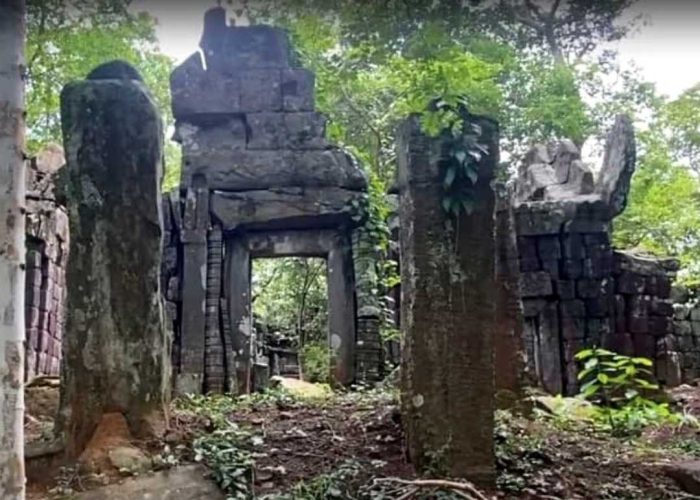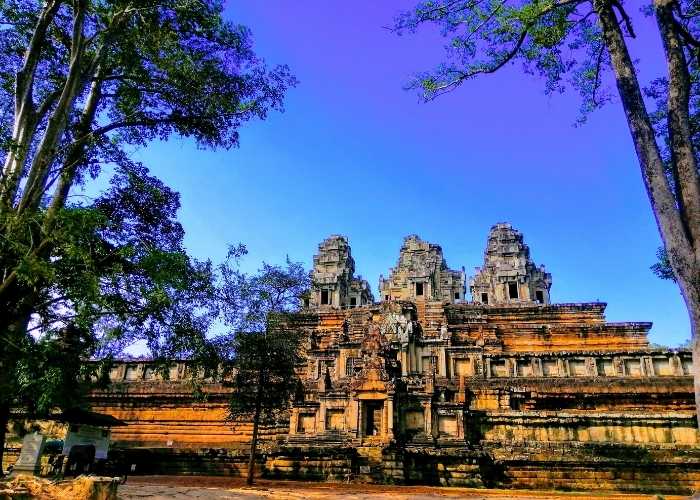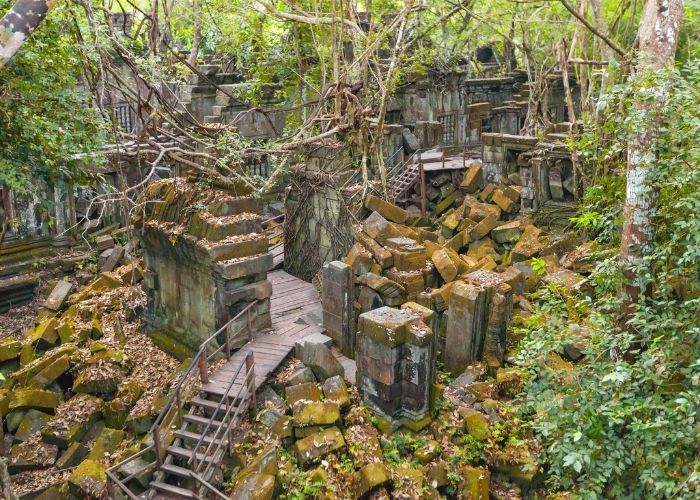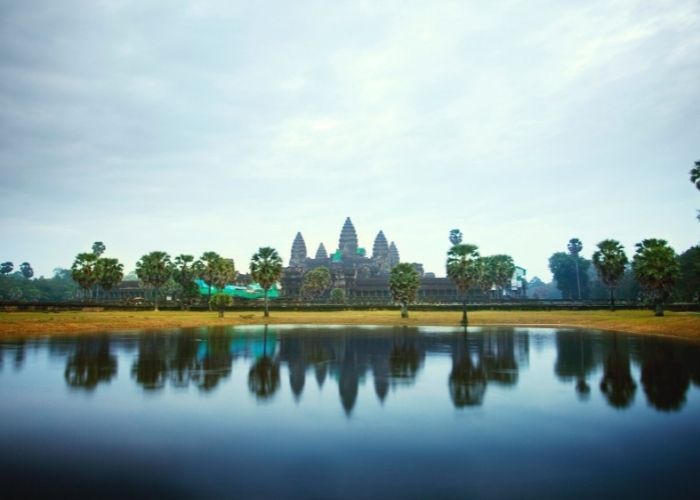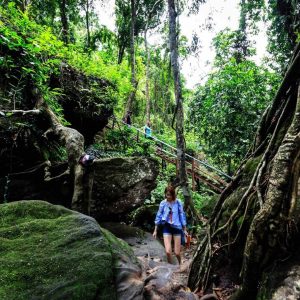Koh Ker, also known as Chok Gargyar in Old Khmer inscriptions, is a 10th-century temple complex and former capital of the Khmer Empire in northern Cambodia.
Chok Gargyar Temple
Chok Gargyar is a one-of-a-kind site because it is the only one we know of that is named in the Old Khmer language (Khmer ancient capitals are usually named in Sanskrit) and refers to a natural feature, namely the tree now known as Koki or iron wood tree (Hopea odorata), which can reach up to 45 m and is valued for its dense wood quality that is water and termite-resistant.
The thickly wooded site, which has a total of 169 archaeological remains, including 76 temples, civic structures, ponds, dykes, and ancient roadways, is strategically positioned amongst three other Cambodian World Heritage Sites: Preah Vihear, Angkor, and Sambor Prei Kuk.
It is 102 kilometers north-east of Angkor Wat at Siem Reap, 126 kilometers south of Preah Vihear Temple Site, and 171 kilometers north-west of Sambor Prei Kuk Site.
Private Tour of Titanic & Pyramid Temple - Beng Mealea and Koh Ker Temples
A brief history of the Koh Ker Temples complex
Koh Ker features a terrain characterized by rolling hills of varying heights ranging from 70 m to 110 m, producing a gradual slope from south to north and corresponding with the watershed of the Steung Sen River.
For a brief while, from 928 and 941 C.E., Koh Ker served as the capital of the Khmer Empire under its founder, King Jayavarman IV.
The Koh Ker inscription, which demonstrates a definite transition in Khmer political philosophy from ‘rja’ or monarch, to ‘rjya’ or the kingdom and its people, is the sole legitimate, current knowledge concerning Angkor’s political doctrine. Jayavarman IV conducted no war in favor of this new doctrine; his reign was the Khmer Empire’s most tranquil period, allowing for a cultural renaissance.
During this period of peace, Jayavarman IV was able to carry out initiatives of regional, social, economic, and architectural development, urban planning, and rural infrastructure, as evidenced by the monument complex at Koh Ker.
The art and architecture of Koh Ker were also produced to represent and confirm the supremacy and distinctiveness of Jayavarman IV’s political identity, notably via the use of monumentality of scale in building and dynamism in sculpture, both of which are unrivaled in other Khmer legacies (source- UNESCO).

